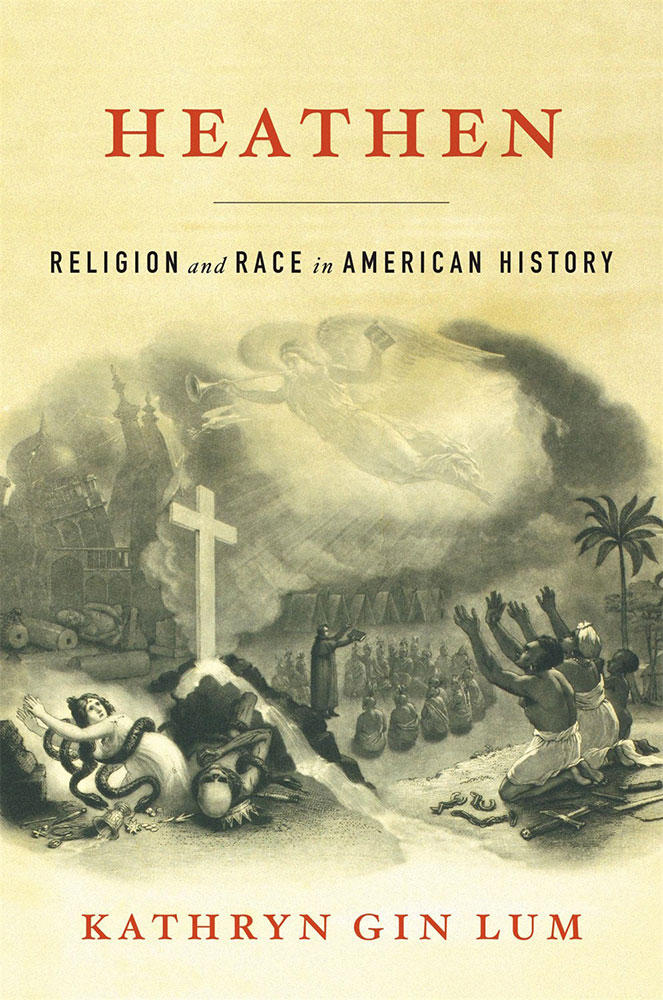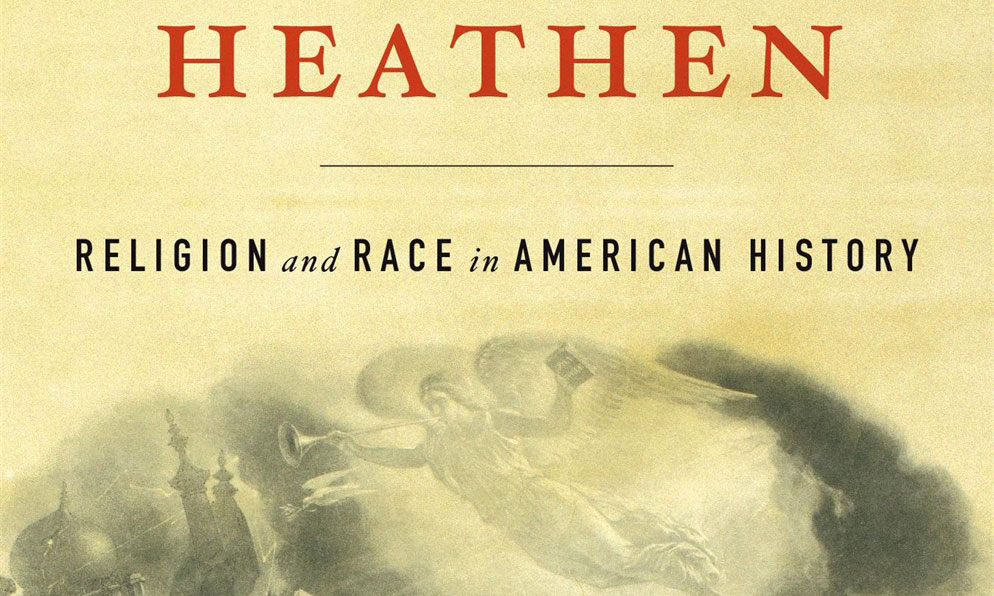Kathryn Gin Lum (Stanford University) reflects on her new book.
Heathen: Religion and Race in American History is a sweeping account of a religious category that has shaped how race operates in America. As such, the book isn’t primarily or solely focused on Asian American religions, but it did grow out of my formative interest in the othering of the Chinese as quintessential “heathens” in the second part of the nineteenth century. As a history major at Stanford, I wrote a senior thesis on Protestant missions to European and Chinese immigrants in gold rush-era California. I was struck then by how much the language of heathenism seemed to “stick” to the Chinese, even when they had converted. At the same time, the category of “heathen” was so broad that it also encompassed large swaths of the world. What did “heathenism” entail? How had the category developed over time? And why did it become so closely connected to the Chinese in the exclusion era?
Those questions were too big for an undergrad thesis and too broad for a grad school dissertation, so I came back to them for the book that would become Heathen. To be honest, as I was beginning the research for Heathen, I hoped that I might find a narrower story to tell – maybe a microhistory – that I could write first, returning to Heathen for a sprawling and leisurely post-tenure book that I could work on without time pressure. I did end up finding that story–an intertwined microhistory of Wong Chin Foo and Yan Phou Lee, who wrote, respectively, “Why Am I a Heathen?” and “Why I Am Not a Heathen” for the North American Review in 1887. But by then, I realized that I needed a book like Heathen in order to contextualize Wong’s and Lee’s positions and the stakes of the “heathen” label.
What I try to do in Heathen, then, is to offer a framework for understanding the significance of religious othering to racialization in this country. The category of the “heathen” has long inscribed a binary onto the world, between the saved Christian and the poor heathen, the former having received the “light” of the gospel and the latter living out of its reach. Heathens were understood to be guilty but pitiful, requiring rescue from their inability to care for themselves. The category of “heathen” incorporated the vast majority of the world and helped to create the figure of the “white savior.” Where racial hierarchies can operate in a kind of divide-and-conquer strategy of racial governance (Claire Jean Kim’s well-known exposition of racial triangulation comes to mind), the “heathen” binary emphasizes similarities between groups to keep them all below the “white savior.”
This is the necessary context to why the Chinese were labeled as quintessential “heathens” in the late-nineteenth century. Europeans and Euro-Americans recognized the longevity of Chinese civilization and coveted Chinese tea, silks, and porcelain. But as the Chinese came to the U.S. in greater numbers, exclusionists argued for their incompatibility with American civilization. By calling the Chinese “heathen,” exclusionists knocked them off racial ladders and into the shared morass of “heathen” degradation. This was to the chagrin of many Chinese immigrants, whose own ethnocentrism made them reluctant to see their struggle as of a piece with others’.
But the thing about the category of “heathen” is that its very clumping quality also held within it the potential for solidarity. The people labeled as such sometimes resisted the label, but at other times embraced it as a marker of differentiation from white Christian hypocrisy and bad behavior.


